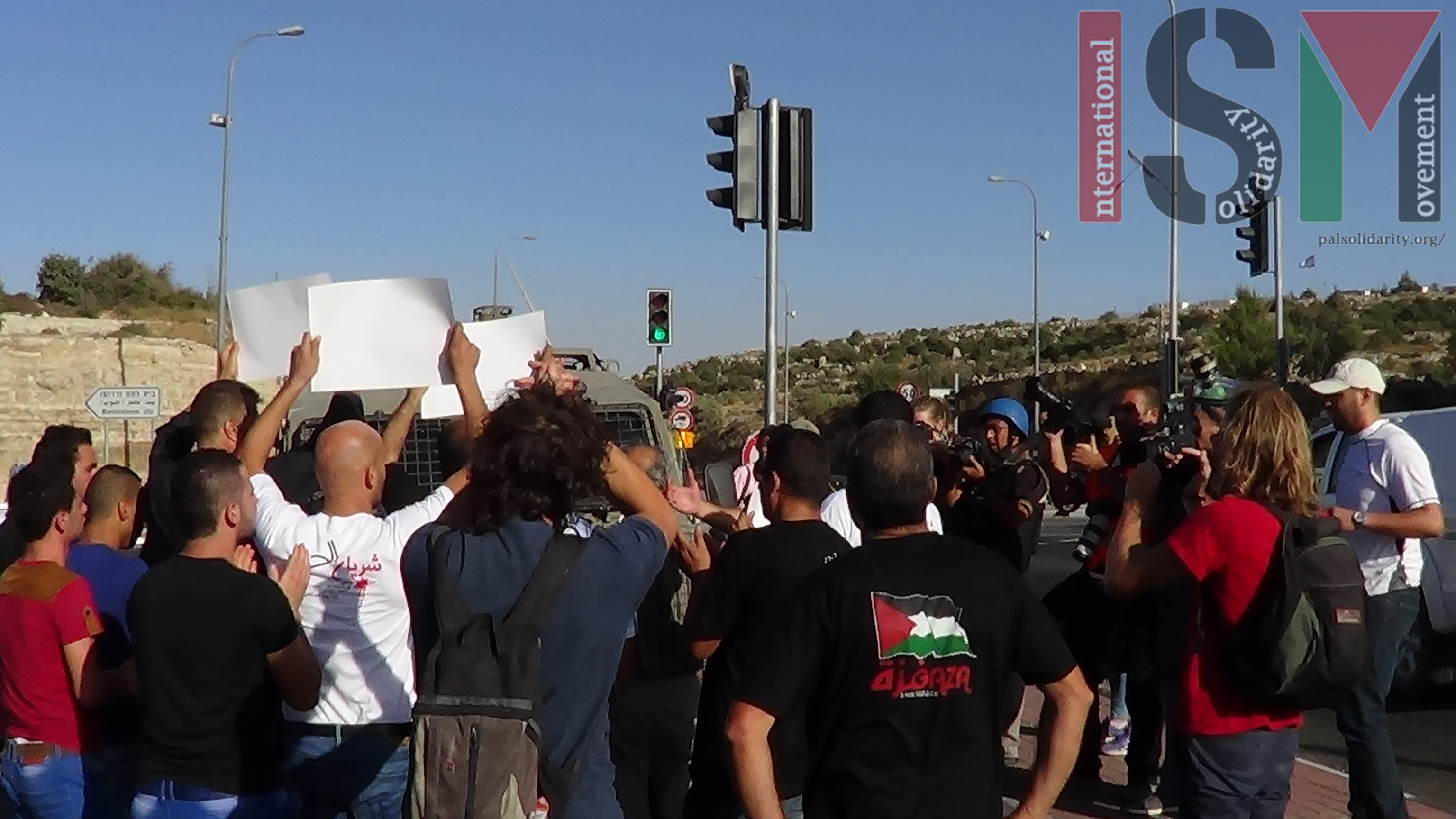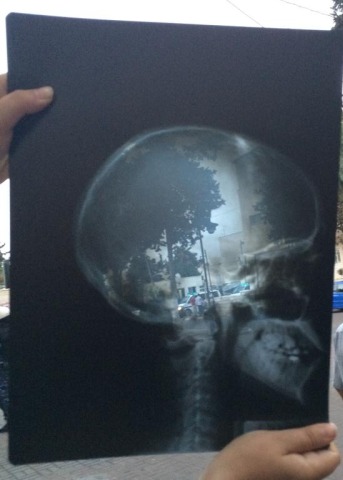Tag: Rubber-coated steel bullets
-
Palestinians block settler road in solidarity with Gaza
2nd August 2014 | International Solidarity Movement | Al-Khader, Occupied Palestine On the 30th July, approximately 40 Palestinian and international activists marched from al-Khader gate on the outskirts of Bethlehem and blocked Road 60, which connects all the illegal settlements in the area to Jerusalem, in protest over Israel’s attack on the people of Gaza. The group peacefully marched up the road leading…
-
One Palestinian killed and over 25 injured as Israeli military invade Ramallah
22nd June 2014 | International Solidarity Movement| Ramallah, Occupied Palestine In the early hours of the morning, the Israeli military invaded the Ramallah district of the West Bank; at least 25 people were injured, mostly from the many rubber-coated steel bullets fired by the soldiers. One youth was shot with live ammunition in the head. Mahmoud Atalla…
-
Photo story: Palestinians protest the deaths of two martyrs
17th May 2014 | International Solidarity Movement | Ofer, Occupied Palestine On the 16th May, Palestinians protest on the road to Ofer prison, following the murder of two Palestinian youths on the same road on the previous day during the Nakba Day protest. The youths, 22-year-old Muhammad Audah Abu al-Thahir and 17-year-old Nadim Siyam Nuwarah, were…



